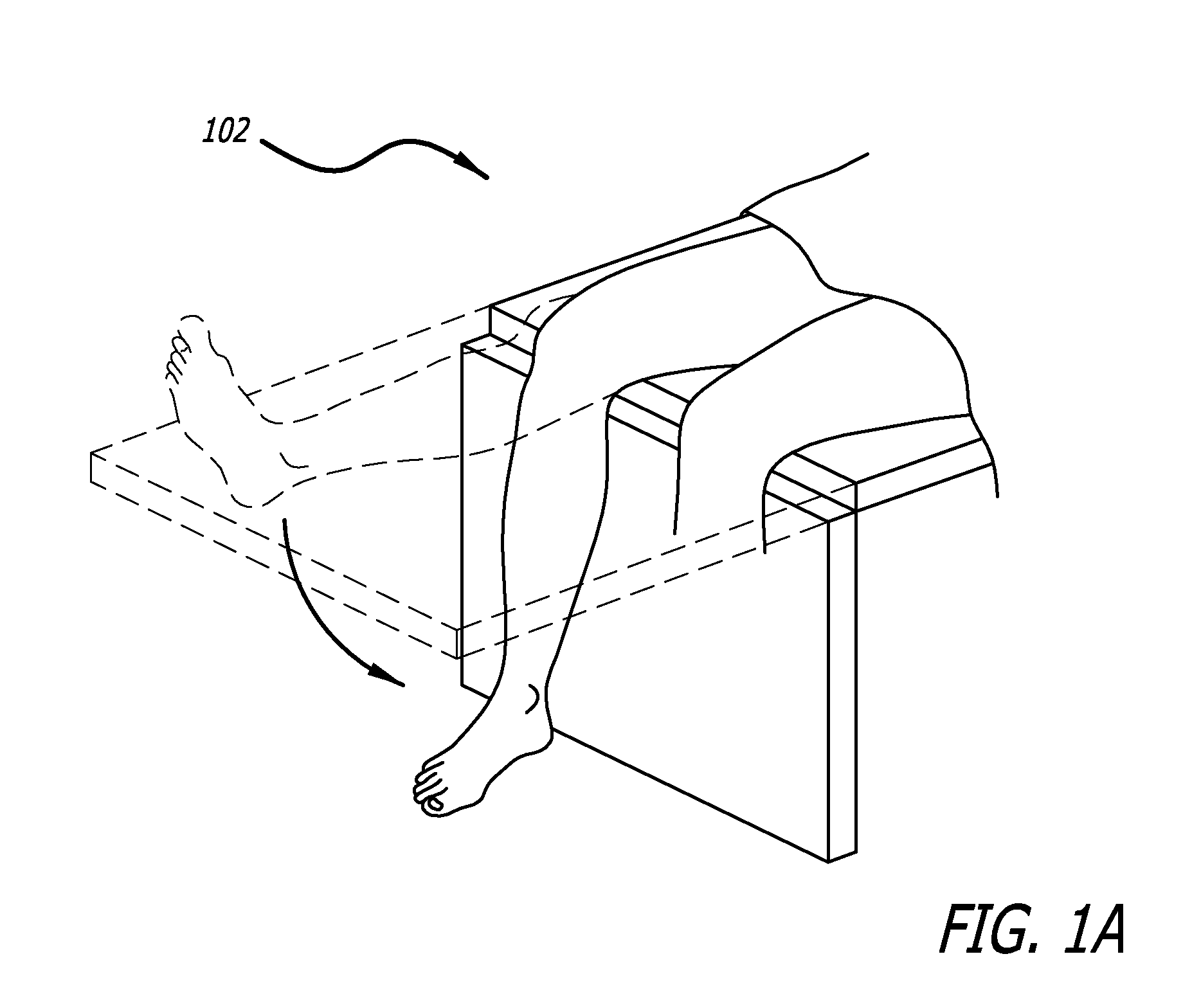Surgical implantation method and devices for an extra-articular mechanical energy absorbing apparatus
a mechanical energy absorbing apparatus and surgical technology, applied in the field of body tissue treatment, can solve the problems of cell death, morphological and cellular damage, subsequent inflammation, etc., and achieve the effects of reducing load, reducing load on joints, and increasing compression
- Summary
- Abstract
- Description
- Claims
- Application Information
AI Technical Summary
Benefits of technology
Problems solved by technology
Method used
Image
Examples
Embodiment Construction
[0129]Referring now to the drawings, which are provided by way of example and not limitation, the present disclosure is directed towards apparatus for treating body tissues. In applications relating to the treatment of body joints, the described approach seeks to alleviate pain associated with the function of diseased or malaligned members forming a body joint. Whereas the present invention is particularly suited to address issues associated with osteoarthritis, the energy manipulation accomplished by the present invention lends itself well to broader applications. Moreover, the present invention is particularly suited to treating synovial joints such as the knee, finger, wrist, ankle and shoulder.
[0130]In one particular aspect, the presently disclosed method seeks to permit and complement the unique articulating motion of the members defining a body joint of a patient while simultaneously manipulating energy being experienced by both cartilage and osseous tissue (cancellous and cor...
PUM
 Login to View More
Login to View More Abstract
Description
Claims
Application Information
 Login to View More
Login to View More - R&D
- Intellectual Property
- Life Sciences
- Materials
- Tech Scout
- Unparalleled Data Quality
- Higher Quality Content
- 60% Fewer Hallucinations
Browse by: Latest US Patents, China's latest patents, Technical Efficacy Thesaurus, Application Domain, Technology Topic, Popular Technical Reports.
© 2025 PatSnap. All rights reserved.Legal|Privacy policy|Modern Slavery Act Transparency Statement|Sitemap|About US| Contact US: help@patsnap.com



